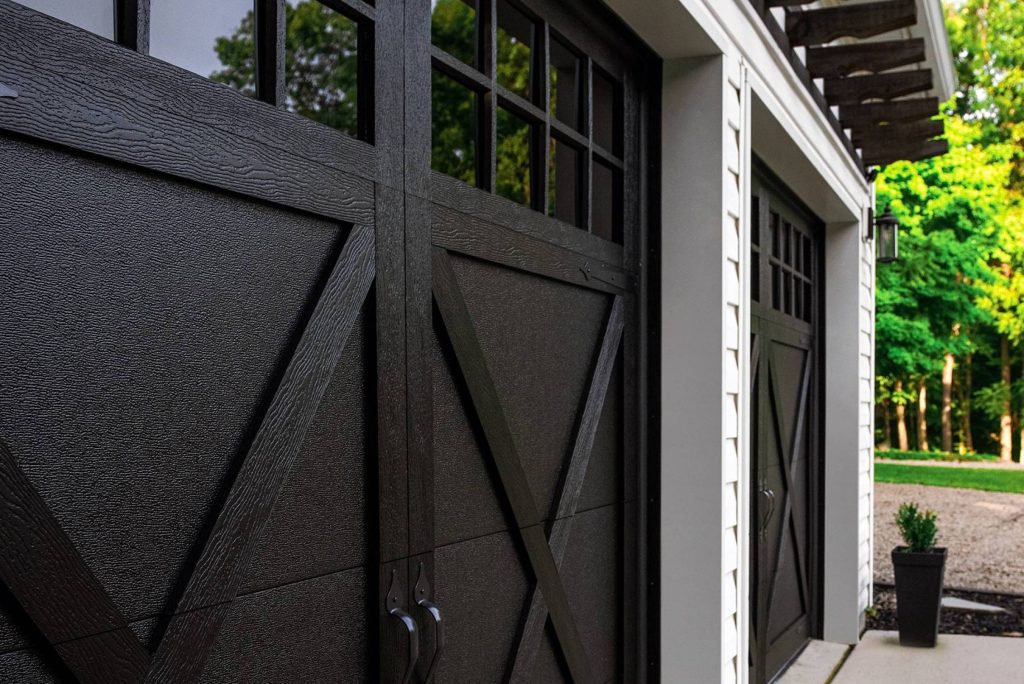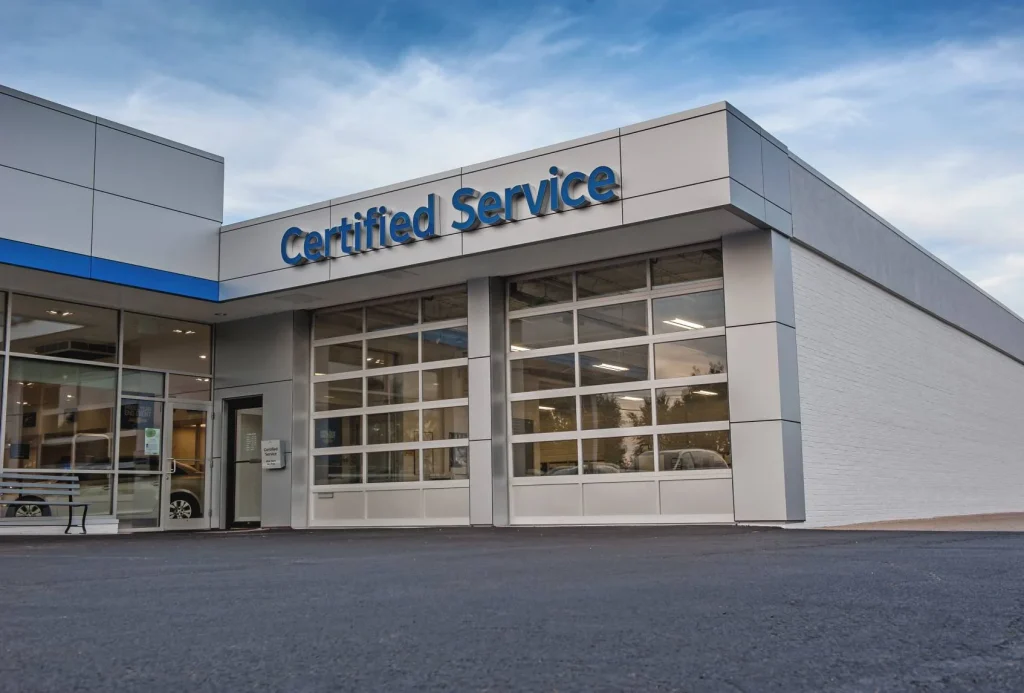Garage Door Torsion Spring in Highland Park, MI
High-Performance Springs for Reliable Operation
Locally Based, Regionally Trusted
Since 2017
Schedule A Service Request
We Serve Businesses In And Around The Following Cities:
About Garage Door Torsion Springs
Garage Door Torsion Spring in Commercial Properties of Highland Park
In the bustling business hubs of places like Highland Park, ensuring that commercial structures function seamlessly is crucial. At the center of many operations is a seemingly small yet vital component: the garage door torsion spring. This device is not only essential for the smooth functioning of large doors but also serves as a linchpin of security and operational efficiency. The role of garage door torsion springs in commercial properties cannot be understated, especially considering the high demand for secure, efficient operations in business-centric areas.
Understanding Garage Door Torsion Spring Dynamics
Garage door torsion springs, often referred to as garage door torque springs or coil springs, are the unsung heroes behind the effortless lifting and closing of heavy industrial overhead doors. They operate on the principle of torque, efficiently managing the balance of the garage door by storing mechanical energy. This stored energy is what allows a heavy door to feel surprisingly light when lifted by hand or motorized systems. In commercial properties, where efficiency and safety often dictate the bottom line, understanding the mechanics of these springs is crucial.
The essence of torsion springs lies in their design. They are generally installed horizontally above the garage door opening. When the door closes, the springs wind tightly, building up tension. This tension is subsequently released in a controlled manner to open the door. It's a system that caters not just to everyday use but also to emergencies, minimizing downtime by ensuring swift manual operation when needed.
In practical terms, imagine a bustling warehouse in Highland Park where time equals money. Every second lost to manual lifting due to a malfunctioning door can translate into lost revenue or disrupted supply chains. The robust design of garage door torque springs thus plays a pivotal role in ensuring continuity of operations. D&J Contracting acknowledges this critical need and provides expert solutions to maintain these systems efficiently.
The Process of Installing and Maintaining Torsion Springs
For businesses aiming to install garage door torsion springs, the initial step is a detailed assessment. This involves analyzing the specific operational requirements and workload of the commercial establishment. Professionals like D&J Contracting in Highland Park carry out these assessments, recommending the optimal type and size of torsion spring for your needs. The installation process is meticulous, requiring precision to ensure that the springs are able to handle the load effectively, enhancing the lifespan of the door system.
Once installed, ongoing maintenance is vital. Regular inspections can preemptively identify wear and tear before they escalate into operational disruptions. This includes checking the balance of the garage door, lubricating the springs to prevent rust, and tightening any loose components to ensure everything functions safely and efficiently. Businesses in busy metropolitan areas, such as those in Highland Park, benefit greatly from these practices, reducing downtime and extending the service life of their installations.
Consider a retail facility on Highland Park Avenue. Regular checks and maintenance by companies specializing in overhead door torsion spring solutions ensure that their customer receiving bays remain operational throughout the year. This avoids the costly impediment of a door failure during critical delivery windows.
Benefits of Properly Functioning Torsion Springs for Businesses
The advantages of a well-maintained torsion spring extend beyond the immediate practicality of door operations. First, there is a security aspect. A garage door with a faltering torsion system can leave a business exposed to unauthorized access, potentially compromising the safeguarding of critical assets. In Highland Park, where protecting commercial assets is paramount, investing in reliable torsion spring solutions adds an invaluable layer of security.
Moreover, businesses that employ optimally functioning garage door torsion springs experience increased energy efficiency. A door that opens and closes smoothly, without unnecessary strain on mechanical systems, contributes to lower energy consumption. This is particularly beneficial for entities involved in logistics or warehousing, where temperature regulation is a factor and ingress and egress need to be swift to maintain environmental conditions.
Efficiency also breeds cost-effectiveness. Torsion springs specifically designed for garage doors can manage thousands of cycles—each cycle defined by a complete open-and-close operation—before needing replacement or adjustment. For example, the choice of torsion spring for garage setups can affect not just performance but also operational costs. By choosing the right springs, businesses in Highland Park can mitigate frequent replacements, thus ensuring they maximize their investment.
Businesses like distribution centers or supermarkets in Highland Park can attest to the ripple effect of these systems. With the ease and reliability of their operations, they enhance their competitive edge, ensuring that their services are always available and customer satisfaction remains high.
Real-World Application Cases in Highland Park
Consider the example of a commercial car dealership in Highland Park. For such a business, the aesthetic appeal and functionality of the garage door are partly integral to their brand image. They rely heavily on garage door coil springs to ensure that the doors open and close quietly and efficiently, projecting professionalism and attention to detail to potential car buyers. By utilizing quality torsion springs, these dealerships maintain a pristine and seamless customer experience.
Meanwhile, in the realm of heavy industry, manufacturing plants scattered throughout Highland Park rely heavily on robust torsion spring systems to minimize production line interruptions. The constant flow of materials, often leading to and from expansive warehouse facilities, hinges on reliable door operations. By leveraging high-quality overhead door torsion springs, these industries guarantee minimal downtime, preserving productivity and aligning with stringent delivery schedules.
D&J Contracting often collaborates with these operations, providing tailored solutions that include both emergency repairs and scheduled maintenance to ensure that these critical components are always in peak condition. Their expertise in adapting torsion springs to the unique demands of varying business models across Highland Park demonstrates the adaptability and necessity of this technology.
Choosing the Right Partner for Your Torsion Spring Needs
Businesses in Highland Park contemplating new installations or regular maintenance of their garage door torsion springs would benefit from selecting partners who prioritize not just technical skill but also understanding of local business dynamics. D&J Contracting exemplifies such a partnership, offering a blend of technical precision and customer-focused service. Their approach is not just about solving immediate mechanical issues but also ensuring the long-term success and efficiency of their clients’ operations.
The assurance provided by professional installation and maintenance goes beyond the immediate mechanical aspects. It creates peace of mind, allowing businesses to focus on growth and service delivery, secure in the knowledge that one of their operational cornerstones is dependable and well-supported. Whether for initial consultations or ongoing service agreements, businesses gain more than just a contractor – they gain a partner in operational excellence.
Understanding the intricate operations, potential issues, and long-term mechanical behaviors ensures that the commercial establishments of Highland Park continue to thrive without disruption. With the combined expertise available in the locale, any commercial entity is well-positioned to enhance its facility's efficiency and security.
In a dynamic urban landscape, the garage door torsion spring stands as a silent operator ensuring smooth transitions and efficient operations. Acknowledging its importance and investing prudently in its maintenance through expert services like those of D&J Contracting will undoubtedly pay dividends. Businesses are thus empowered to concentrate on what they do best, confident in the reliability of their infrastructure. Engage the expertise available locally, prioritize operational efficiency, and keep the focus on strategic development without distraction from mechanical setbacks.
Garage Door Torsion Springs Gallery



Call Us Today to receive your Free Quote for Garage Door Torsion Spring in Highland Park
Serving: Highland Park, Michigan

About Highland Park, Michigan
The area that became Highland Park began as a small farming community, on a large ridge at what is now Woodward Avenue and Highland, six miles (9.7 km) north of Detroit. In 1818, prominent Detroit judge Augustus B. Woodward bought the ridge, and platted the village of Woodwardville in 1825. The development of the village failed. Another Detroit judge, Benjamin F. H. Witherell, son of Michigan Supreme Court justice James Witherell, attempted to found a village platted as Cassandra on this site in 1836, but this plan also failed.
By 1860, the settlement was given a post office under the name of Whitewood. After a succession of closures and reopenings of the rural post office, the settlement was finally incorporated as a village within Greenfield Township and Hamtramck Township under the name of Highland Park in 1889.
In 1907, Henry Ford purchased 160 acres (65 ha) just north of Manchester Street between Woodward Avenue and Oakland Street to build an automobile plant. Construction of the Highland Park Ford Plant was completed in 1909, and the area's population dramatically increased in 1913, when Henry Ford opened the plant's first assembly line. The village of Highland Park was incorporated as a city in 1918 to protect its tax base, including its successful Ford plant, from Detroit's expanding boundaries.
In 1910, Highland Park, then a village, had 4,120 residents. Between 1910 and 1920 during the boom associated with the automobile industry, Highland Park's population grew to about 46,500, an increase of 1,081 percent, reaching its peak around 1927. The growth of Highland Park and neighboring Hamtramck broke records for increases of population; both municipalities withstood annexation efforts from Detroit. In 1925, Chrysler Corporation was founded in Highland Park. It purchased the city's Brush-Maxwell plant, which would eventually expand to 150 acres and serve as the site of the company's headquarters for the next 70 years.
Arthur Lupp of Highland Park founded the Michigan branch of the Black Legion in 1931; it was a secret vigilante group related to the Ku Klux Klan, which had been prominent in Detroit in the 1920s. The Legion had a similar nativist bent and its members were opposed to immigrants, Catholics, Jews, blacks, labor organizers, etc. Many public and business officials of Highland Park, including the chief of police, a mayor, and a city councilman, joined this group. Lupp and others were among the 48 men indicted and convicted following the murder of Charles Poole in May 1936; eleven were convicted in that murder. Investigations revealed the Legion had been involved in many other murders or conspiracies to murder during the previous three years, for which another 37 men were convicted. These convictions ended the reign of the Legion.
In 1944, the Davison Freeway was opened as the country's first modern depressed urban freeway, running through the center of the city. It was completely reconstructed and widened in 1996 and 1997 to improve its safety.
Ford Motor Company demolished large sections of its Highland Park plant in the late 1950s. With the loss of industrial jobs, the city suffered many of the same difficulties as Detroit: declines in population and tax base accompanied by an increase in street crime. White flight from the city accelerated after the 1967 Detroit 12th Street Riot. Ford's last operation at the factory, the production of tractors at its Model T plant, was discontinued in 1973, and in 1981 the entire property was sold to a private developer for general industrial usage. The city population was majority black and impoverished by the 1980s. Chrysler, the city's last major private sector employer, moved its corporate headquarters from Highland Park to Auburn Hills between 1991 and 1993, paying the city $44 million in compensation. The move dislocated a total of 6,000 jobs over this period.
On June 19, 1982, drafter Vincent Chin was beaten to death in Highland Park by two automotive workers in retaliation for Japan's success in the automotive industry. The killing was considered a racially-motivated hate crime.
Known as "The City of Trees", the town was thickly forested until the 1970s. The spread of Dutch elm disease required many old trees to be cut down.
From 2001 to 2009, the city was controlled by an emergency financial manager appointed by the State of Michigan due to mounting financial stress.
In August 2011, more than two-thirds of the street lights in Highland Park's residential neighborhoods and alleys were removed by the city, due to an inability to pay a $60,000 per month electric bill. The street lights were not only turned off, but decommissioned, or removed from their posts. The city advised residents to keep porch lights on to deter crime. The following year, a local 501(c)(3) nonprofit organization, Soulardarity, was formed to restore streetlighting to the city's residential neighborhoods and alleyways in the form of solar street lights.
On November 20, 2013, the Detroit Water and Sewerage Department filed a lawsuit against the City of Highland Park regarding unpaid sewage services and water totaling $17.7 million. In 2020, the two cities settled out of court for an unspecified amount.
According to the United States Census Bureau, the city has an area of 2.971 square miles (7.69 km), all land.
Highland Park is approximately 6 miles (10 km) north-northwest from Downtown Detroit. It is bounded by McNichols Road (6 Mile Road) to the north, Grand Trunk Western Railroad Holly Subdivision tracks to the east, the alleys of Tuxedo and Tennyson streets to the south, and the Lodge Freeway and Thompson Street to the west.
| Census | Pop. | Note | %± |
|---|---|---|---|
| 1900 | 427 | — | |
| 1910 | 4,120 | 864.9% | |
| 1920 | 46,499 | 1,028.6% | |
| 1930 | 52,959 | 13.9% | |
| 1940 | 50,810 | −4.1% | |
| 1950 | 46,393 | −8.7% | |
| 1960 | 38,063 | −18.0% | |
| 1970 | 35,444 | −6.9% | |
| 1980 | 27,909 | −21.3% | |
| 1990 | 20,121 | −27.9% | |
| 2000 | 16,746 | −16.8% | |
| 2010 | 11,776 | −29.7% | |
| 2020 | 8,977 | −23.8% | |
| 2023 (est.) | 8,443 | −5.9% | |
| U.S. Decennial Census 2020 Census | |||
| Race / Ethnicity (NH = Non-Hispanic) | Pop 1980 | Pop 1990 | Pop 2000 | Pop 2010 | Pop 2020 | % 1980 | % 1990 | % 2000 | % 2010 | % 2020 |
|---|---|---|---|---|---|---|---|---|---|---|
| White alone (NH) | 3,937 | 1,271 | 668 | 347 | 484 | 14.11% | 6.32% | 3.99% | 2.95% | 5.39% |
| Black or African American alone (NH) | 23,300 | 18,594 | 15,598 | 10,955 | 7,876 | 83.49% | 92.41% | 93.14% | 93.03% | 87.74% |
| Native American or Alaska Native alone (NH) | 86 | 33 | 39 | 26 | 34 | 0.31% | 0.16% | 0.23% | 0.22% | 0.38% |
| Asian alone (NH) | 113 | 50 | 41 | 46 | 47 | 0.40% | 0.25% | 0.24% | 0.39% | 0.52% |
| Native Hawaiian or Pacific Islander alone (NH) | 28 | N/A | 3 | 3 | 3 | 0.10% | N/A | 0.02% | 0.03% | 0.03% |
| Other race alone (NH) | 213 | 36 | 29 | 14 | 46 | 0.76% | 0.18% | 0.17% | 0.12% | 0.51% |
| Mixed race or Multiracial (NH) | N/A | N/A | 273 | 229 | 312 | N/A | N/A | 1.63% | 1.94% | 3.48% |
| Hispanic or Latino (any race) | 232 | 137 | 95 | 156 | 175 | 0.83% | 0.68% | 0.57% | 1.32% | 1.95% |
| Total | 27,909 | 20,121 | 16,746 | 11,776 | 8,977 | 100.00% | 100.00% | 100.00% | 100.00% | 100.00% |
As of the 2020 census, there were 8,977 people, 3,917 households, and 1,845 families residing in the city. The population density was 3,021.5 inhabitants per square mile (1,166.6/km). There were 5,137 housing units. The racial makeup of the city was 5.7% White, 88.2% African American, 0.5% Native American, 0.5% Asian, 0.1% Pacific Islander, 0.8% from some other races and 4.2% from two or more races. Hispanic or Latino of any race were 1.9% of the population. 19.3% of residents were under the age of 18, 5.0% were under 5 years of age, and 23.8% were 65 and older.
As of the 2010 census, there were 11,776 people, 4,645 households, and 2,406 families residing in the city. The population density was 3,963.9 inhabitants per square mile (1,530.5/km). There were 6,090 housing units at an average density of 2,050.5 per square mile (791.7/km). The racial makeup was 3.2% White, 93.5% African American, 0.3% Native American, 0.4% Asian, 0.4% from other races, and 2.3% from two or more races. Hispanic or Latino of any race were 1.3% of the population.
There were 4,645 households, of which 28.8% had children under the age of 18 living with them, 13.0% were married couples living together, 32.3% had a female householder with no husband present, 6.5% had a male householder with no wife present, and 48.2% were non-families. 43.4% of all households were made up of individuals, and 16.1% had someone living alone who was 65 years of age or older. The average household size was 2.36 and the average family size was 3.30.
Highland Park had the highest percent of single people, 87%, of any city in Michigan.
The median age in the city was 40.5 years. 23.7% of the city's population was under age 18; 10% was between age 18 and 24; 21.9% was from age 25 to 44; 30% was from age 45 to 64; and 14.4% was age 65 or older. The populace was 49.2% male and 50.8% female.
As of the 2000 census, there were 16,746 people, 6,199 households, and 3,521 families residing in the city. The population density was 5,622.9 inhabitants per square mile (2,171.0/km). There were 7,249 housing units at an average density of 2,434.1 per square mile (939.8/km). The racial makeup was 4.11% White, 93.44% African American, 0.27% Native American, 0.24% Asian, 0.02% Pacific Islander, 0.25% from other races, and 1.67% from two or more races. Hispanic or Latino of any race were 0.57% of the population.
There were 6,199 households, of which 27.6% had children under the age of 18 living with them, 17.0% were married couples living together, 33.4% had a female householder with no husband present, and 43.2% were non-families. 38.4% of all households were made up of individuals, and 15.6% had someone living alone who was 65 years of age or older. The average household size was 2.56 and the average family size was 3.43.
29.1% of the city's population was under the age of 18, 8.6% was from age 18 to 24, 27.5% was from age 25 to 44, 20.2% was from age 45 to 64, and 14.5% was 65 years of age or older. The median age was 34 years. For every 100 females, there were 85.7 males. For every 100 females age 18 and over, there were 79.6 males.
The city's median household income was $17,737, and the median family income was $26,484. Males had a median income of $31,014 versus $26,186 for females. The city's per capita income was $12,121. About 32.1% of families and 38.3% of the population were below the poverty line, including 47.1% of those under age 18 and 30.8% of those age 65 or over.
Between the 1990 Census and the 2000 Census, the population fell by 17%.
Highland Park is served by Highland Park Schools, which was reorganized in 2012 as the Highland Park Public School Academy System, a public school academy district. The academy operates one school, Barber Preparatory Academy, a K-8 school. For high school education, students are zoned to Northwestern High School in the Detroit Public Schools Community District. Highland Park Community High School of Highland Park Schools closed in 2015.
George Washington Carver Academy is a K-8 charter school that was originally authorized by academy. The school's 2008 mathematics and English standardized test scores for 4th grade students were invalidated after cheating had been discovered. In 2013 the school participated in the "Students for Peace" competition in order to reduce the amount of fighting on campus; in 2012 91% of the students had received suspensions because they participated in fighting. In 2016 it had 560 students, and it is managed by Midwest Management Group. That year it changed its authorizer to Bay Mills Community College out of concern that the Highland Park school district may collapse.
Lawrence Technological University was founded in 1932 in Highland Park by the Lawrence brothers as the Lawrence Institute of Technology and adopted its current name in 1989. Lawrence Tech moved to Southfield, Michigan, from its site in Highland Park, Michigan, in 1955.
Highland Park Community College was in Highland Park before its 1996 closing. It had been known as Highland Park Junior College.
In 1918 Katherine and Tracy McGregor, wealthy individuals, deeded the property of a facility for "homeless, crippled, and backward children." The McGregor Public Library opened on that site in 1924. The library closed in 2002. Around 2007 the city began efforts to re-open the library. However, little action has taken place to re-open the building.
